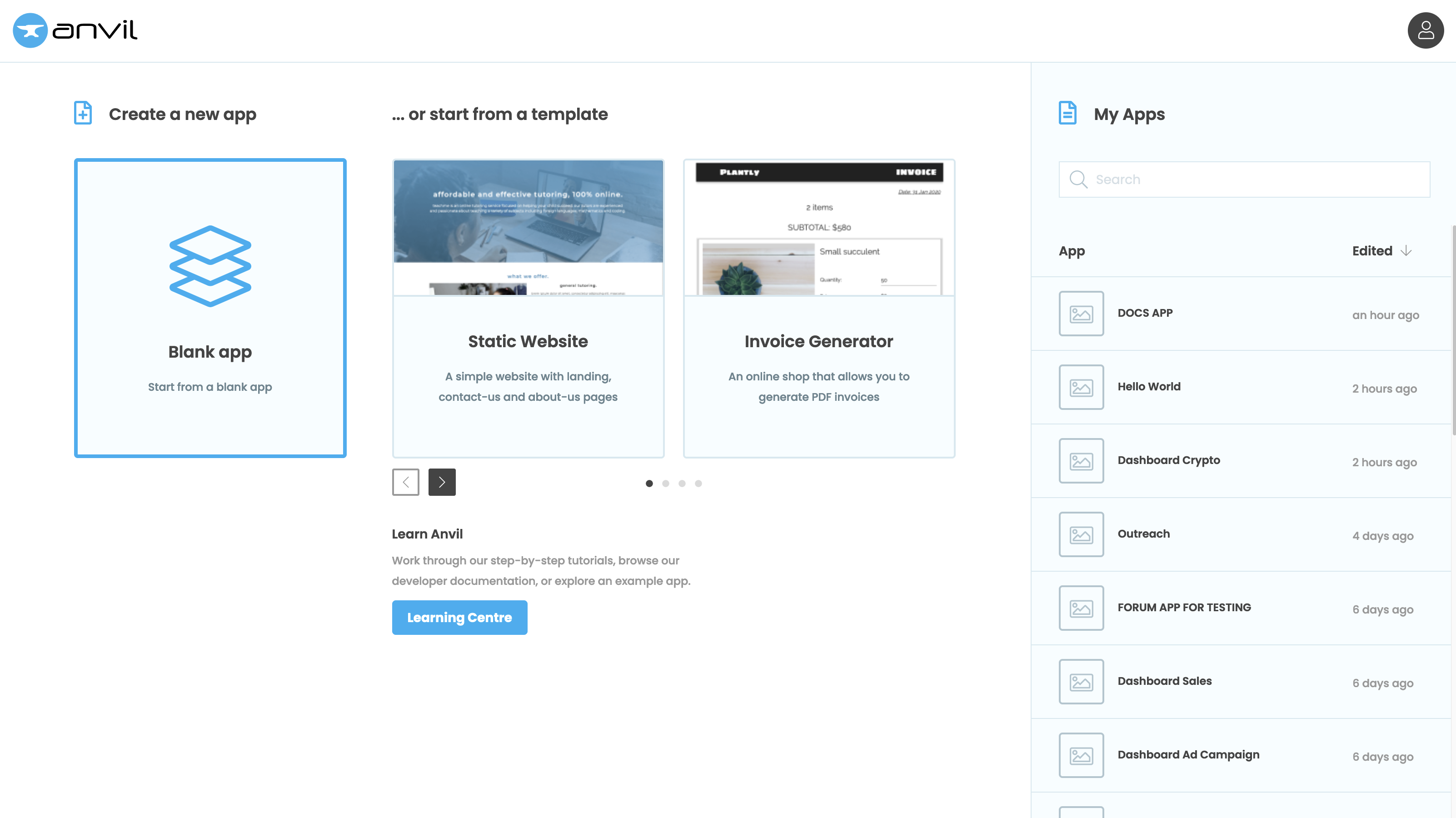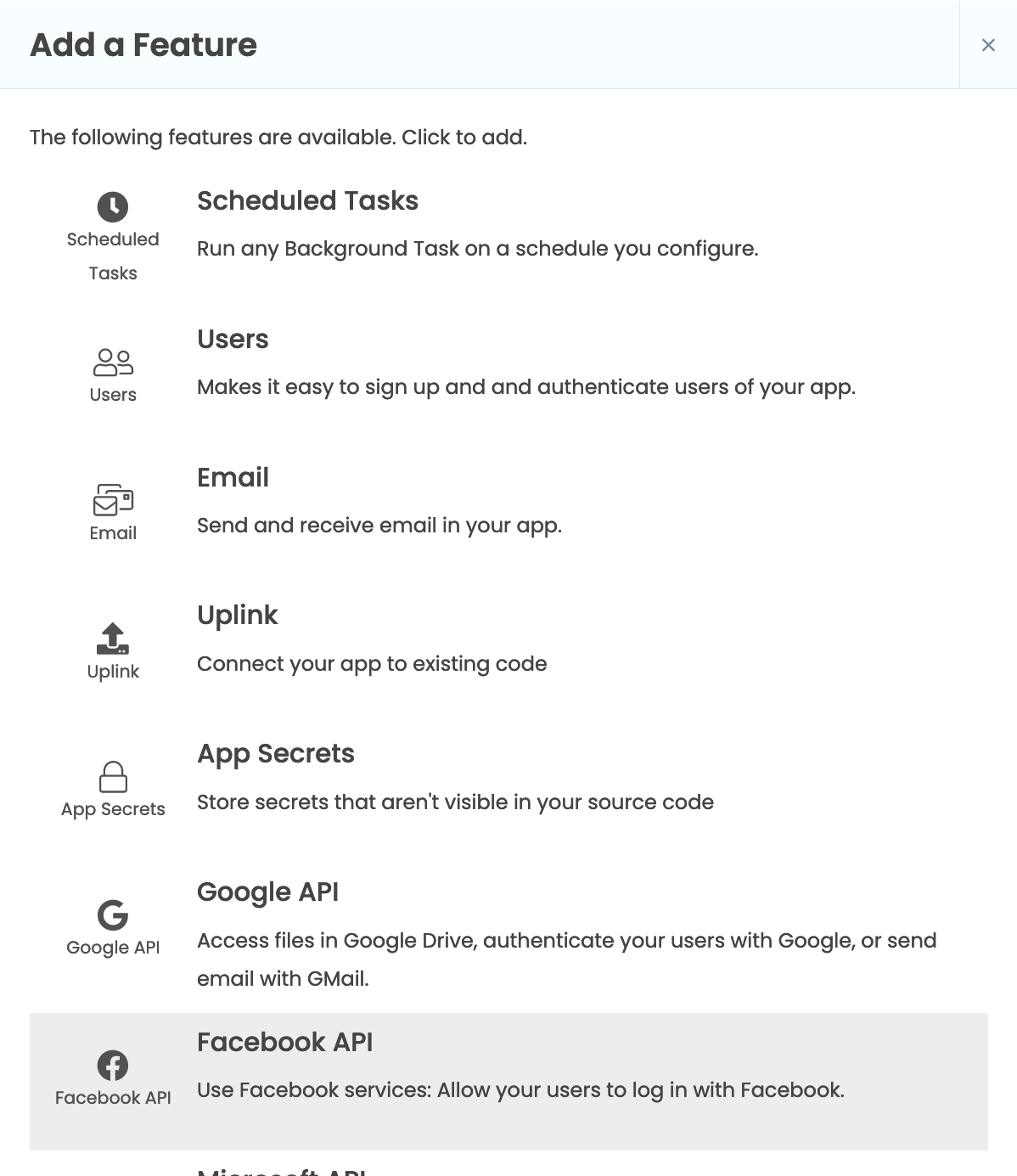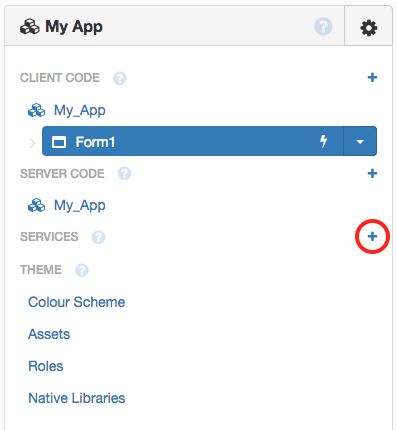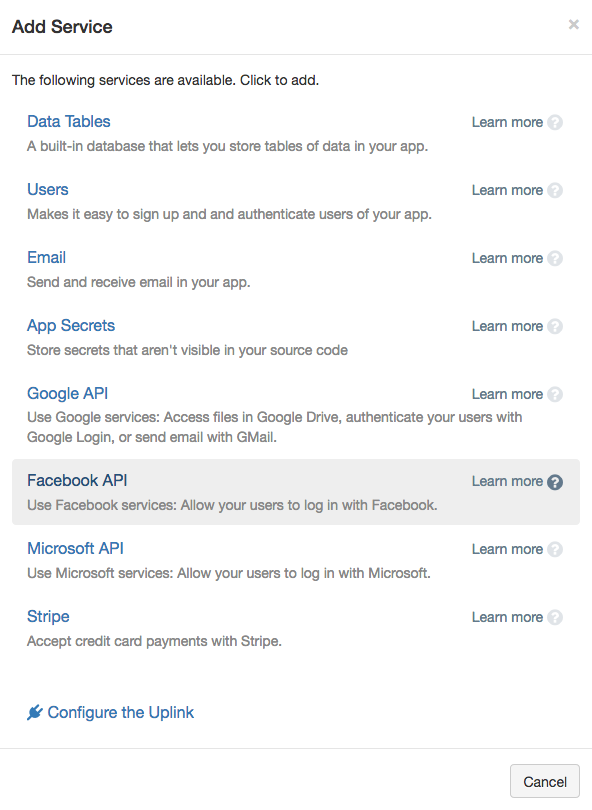Quickstart: Facebook Integration
Log users in using Facebook accounts
Anvil provides a one-line login function to log users in to their Facebook account. You can also add a Facebook login option to the Users Service login form.
Follow this quickstart to enable the Facebook Service and log users in with Facebook.
Create an app
Log in to Anvil and click ‘Blank App’. Choose the Material Design theme.

Log in to Anvil and click ‘Blank App’. Choose the Material Design theme.

Enable the Facebook Service
To add the Facebook service to your app, click the blue plus button  in the Sidebar Menu.
in the Sidebar Menu.

You’ll see a list of available services and integrations. Click on the Facebook API ![]() .
.

In the App Browser, click the + next to Services.

You’ll see a list of available services and integrations. Click on Facebook API.

Make Facebook aware of your Anvil app
Facebook needs to know about your Anvil app in order for the OAuth login flow to work. You’ll use the Facebook for Developers console for this - it only takes a few minutes.
Run through the Linking Facebook and Anvil guide and continue from here when you’re done.
Add a Facebook Login dialog
Go to the Code View for Form1.
Add this line to the __init__ method:
anvil.facebook.auth.login()Now add this line below it to print the logged-in user’s email:
print(f'Logged in with Facebook as: {anvil.facebook.auth.get_user_email()}')Run your app
Run your app.


You will see a Facebook login alert:

If you click the ‘Log In’ button, the Facebook login screen will open in a new window:

You can now login with Facebook. When you’re logged in, you’ll see your email address in the App Console.

You can now login with Facebook. When you’re logged in, you’ll see your email address in the Output Panel.

And that’s all there is to it!
Next up
Other SSO integrations
Similar Single Sign On login functionality is available for Microsoft and Google (and there are some other integrations for Microsoft and Google too).
Just as users can log in with their Facebook accounts using anvil.facebook.auth.login(), they can log in with Microsoft accounts using anvil.microsoft.auth.login(), and Google accounts using anvil.google.auth.login().
You can add any of these login options to the multi-purpose login form presented by the Users Service as well.


Want another quickstart?
Every quickstart is on the Quickstarts page.
Do you still have questions?
Our Community Forum is full of helpful information and Anvil experts.
